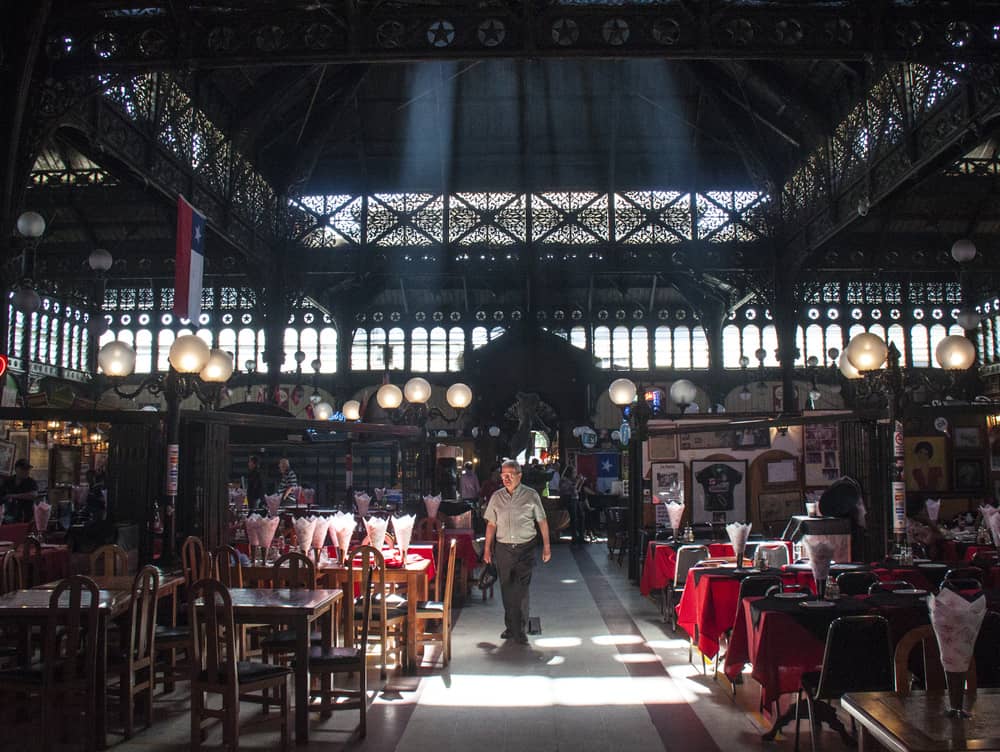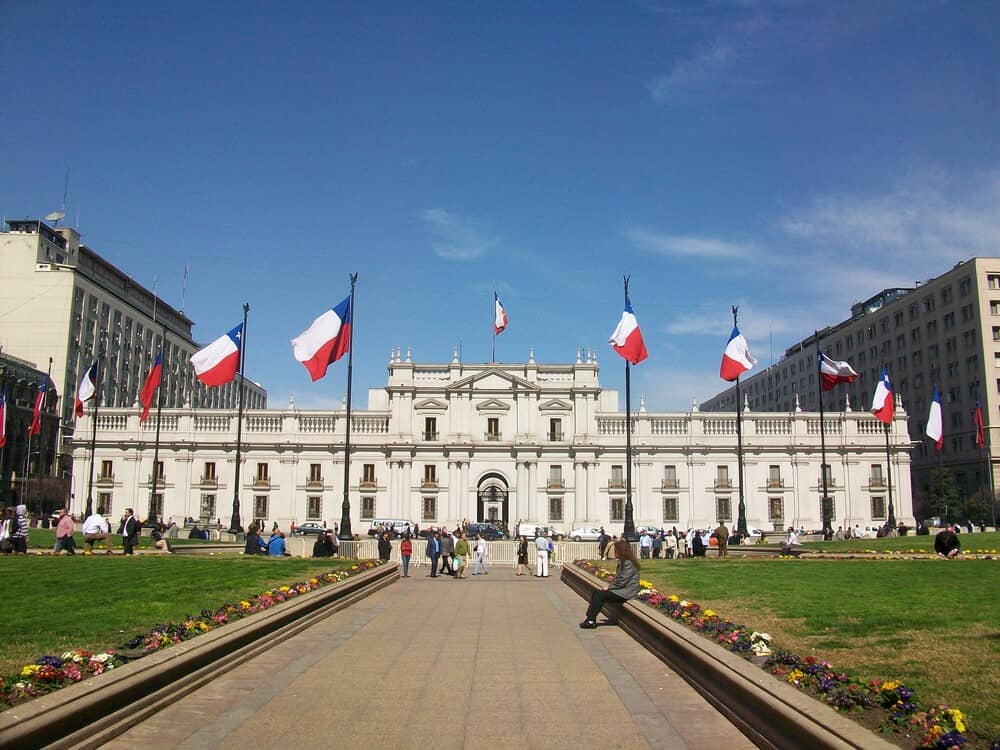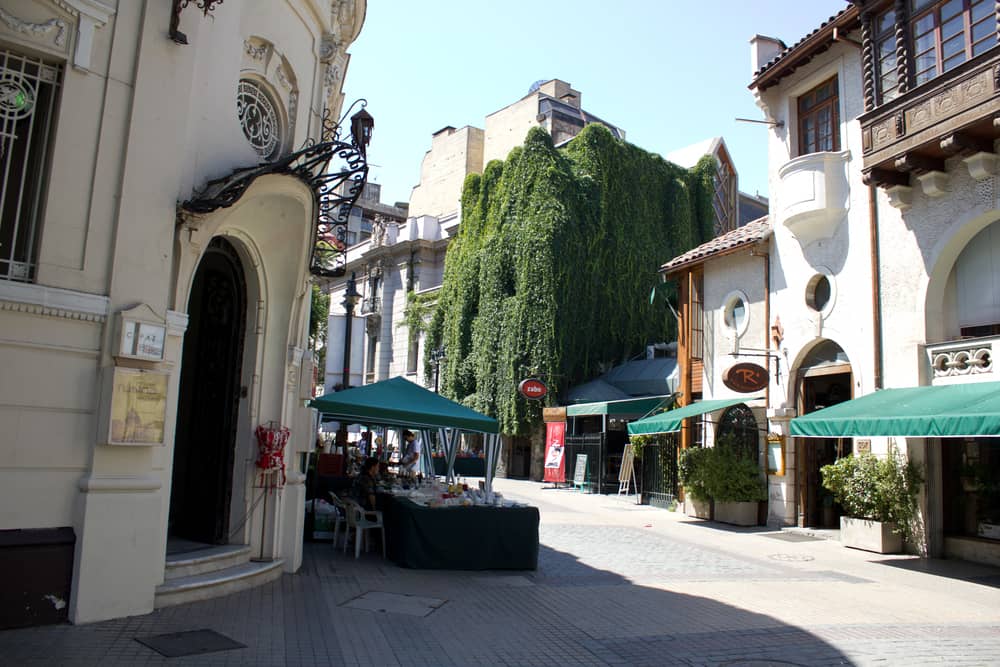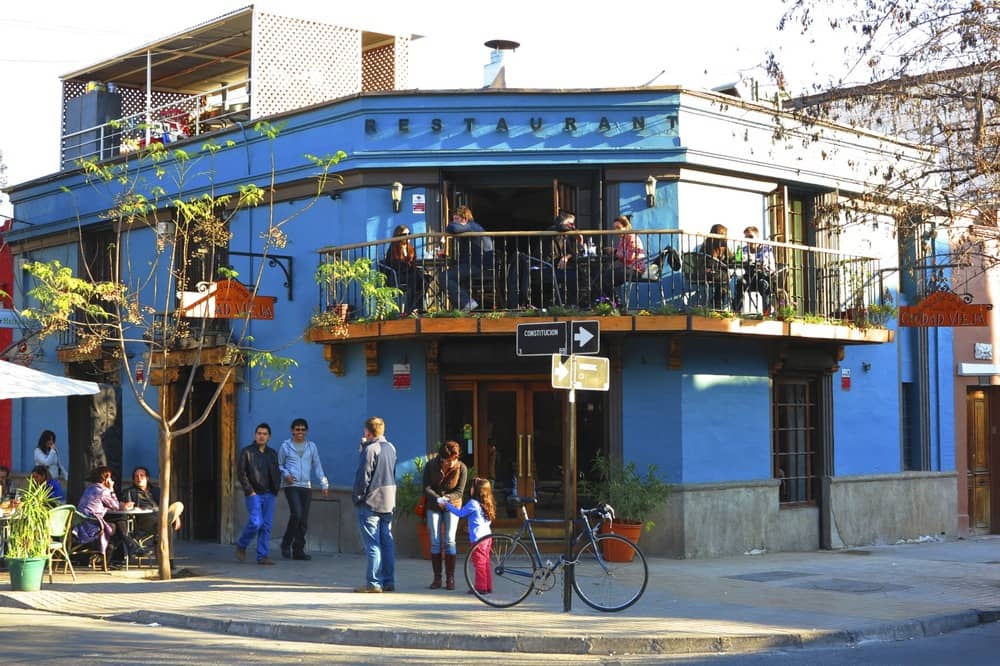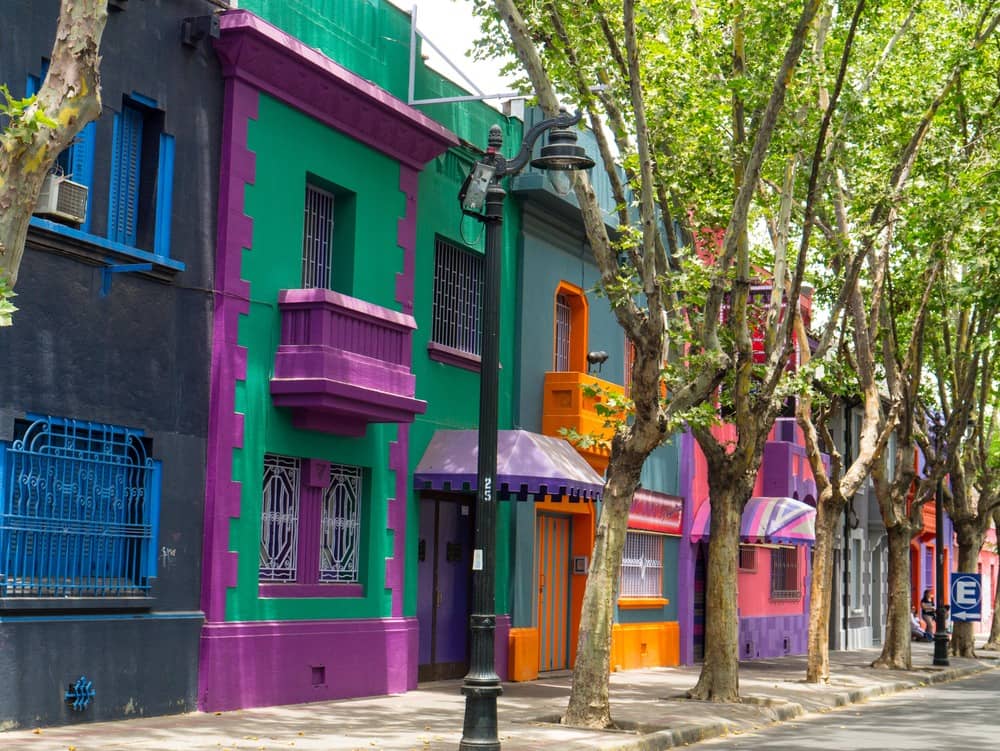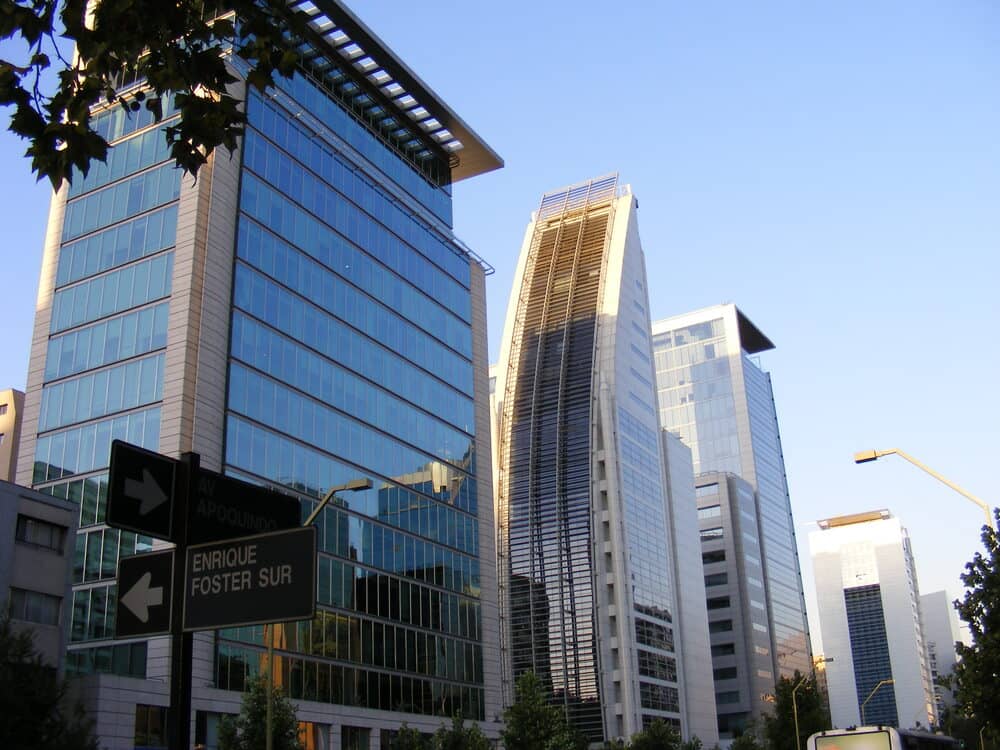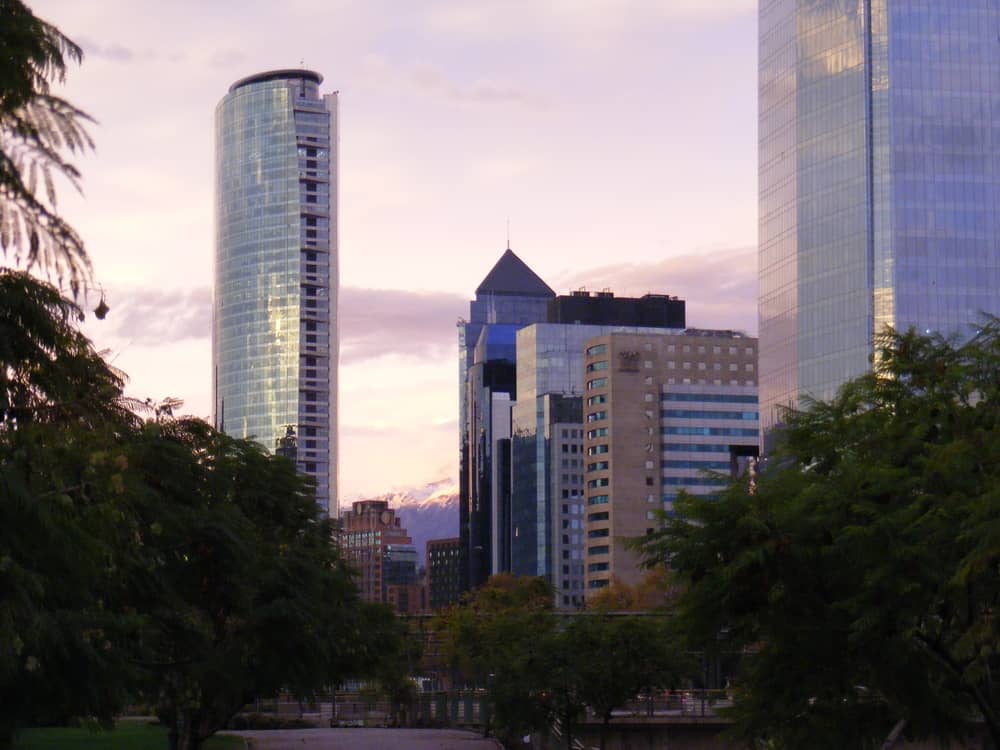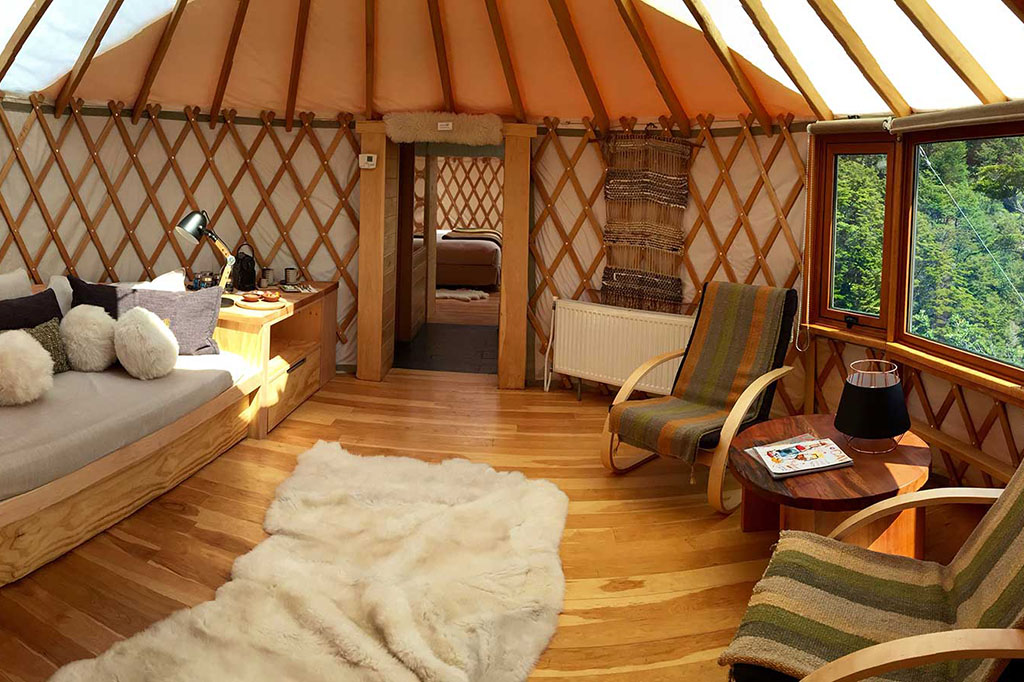Santiago de Chile
Note: ExperienceChile.Org can arrange airport transfers in and out, accommodation in Santiago, pre and post the rest of your trip, as well as build in local Santiago tours and excursions to vineyards, and / or destinations on the coast.
Introduction
Santiago de Chile is the capital of the country. The city is a mixture of large suburban sprawl and modern, bustling, dynamism all surrounded by the huge, glaciated, snow-covered Andes mountains to the east, and the lower, coastal mountains to the west, creating a stunning spectacle on a clear day.
The surrounding mountains create a natural bowl at the base of which Santiago sits. However, at one end, in the downtown area, the altitude is 543mt above sea level, which rises up to 800mt in the eastern, up-market suburbs, therefore most of the city is built on a slope.
Mediterranean Climate
One of the positive aspects to Santiago is the favourable Mediterranean climate it enjoys (average summer daytime temperature is 30°C), with long, hot and usually cloudless summer days running from November to March. The summer is also a period of little smog. Rain, if it comes, is usually in June, July and August, although with global warming there is a lot less precipitation these days. However, when it does rain it also means it snows in the mountains and therefore there is skiing at the ski centres, usually in July and August. But, unfortunately, one of the negative aspects to life in Santiago in the winter is its serious smog problem, which can be especially bad in the months of June, July and August.
Santiago is the fifth-largest city in South America, home to over 7 million people and the central base for 50% of the county's manufacturing industry.
Visitors to Santiago
For the visitor arriving to Santiago to start, or end, their Chile travel itinerary, there are only a few areas worthy of consideration. These areas, or districts, are located in a linear layout that follow the contours of the Mapocho River. Most of the business activity (not industrial) is also concentrated into these areas too.
The Metro Line 1, conveniently follows the linear area of most interest for the visitor, running east to west (or, of course, in reverse). Within the information below we will include the names of the metro stops.
History
What is interesting to note is that the historical sector of Santiago is, effectively, the downtown (Santiago Centro) area. The centre of the city is where the “conquistadores” settled and founded Santiago. Downtown contains not only the history of Santiago but also, to all intents and purposes, maintains a visual record of the early formation of Chile. It also offers a glimpse of the "old days", people-filled streets that are a little chaotic, older buildings, and "South American-style" cafes.
Going East Towards the Andes
Once downtown Santiago became “saturated”, residents began occupying land and newly-constructed houses to the east of the centre of Santiago. These areas are, in order east to west, Providencia, Las Condes, Vitacura and the residential areas of Lo Barnechea with La Dehesa.
The New Districts
As the population grew, together with an increase in personal affluence (for some), the new districts began to take shape. Considering that this process happened, little-by-little, there are a number of buildings that stand as historical “time capsules” that show us a glimpse of the chronological change in architecture style over past times. Although these areas, today, contain numerous modern apartment and office buildings, there is still considerable, older building architecture that show cases the “fashion” and affluence of previous decades. What follows is a general historical categorization of the historic growth of the city. It was always the “newly rich” who occupied the newest buildings, and this is still true today.
Providencia
For example, Providencia, immediately adjacent to downtown (eastern side), is primarily a middle-class residential area, with many of the first residential houses constructed during the 50’s.
Las Condes
Then, adjacent to the east of Providencia is Las Condes, considered to be a “notch” up, socially, from Providencia, with initial constructions more in line with the style of the 60’s and 70’s, however, now along the Las Condes Avenue there are very modern office buildings that went up in the late 90’s and early 00’s. For this to happen all previous houses that were built in the 50’s and 60’s in that area were demolished.
Vitacura
Following this pattern, the next district to the east and adjacent to Las Condes, considered to be another “notch up” the social scale is the area of Vitacura. Here, numerous residential houses and apartments were built during the 70’s and 80’s. But, more recently in the early 00’s, one area nicknamed “Sanhatton” (the area by the Mapocho river, next to El Golf in Las Condes) went gone up after 2010, and which is a bubble of ultra-modern office buildings resembling parts of New York.
Lo Barnechea and La Dehesa
And, most recently, developed over the past twenty years, is the even more up-market zone of Lo Barnechea and La Dehesa with some very large, residential properties.
Therefore, the further you go east from downtown Santiago the more affluent are the people and the area (generally speaking).
The districts of most interest to the Visitor to Santiago are:
We will briefly describe below these areas, with more information in the individual pages (see menu bar):
Downtown, with sub district Lastarria
Providencia, with sub district Bellavista
Las Condes, with sub district El Golf
Vitacura, with sub district “Sanhattan”
Santiago Centro, also known as Downtown
The downtown area of Santiago is the area that contains the museums, historical buildings, and small “bubble” areas of charm. The city was founded by the Spanish Conquistador Pedro de Valdivia in 1541.
Santiago is home to a large part of Chilean history, which can be seen through its museums and historical buildings such as the Palacio de La Moneda (current seat of government), but more so around the Plaza de Armas, which was at the heart of the original Santiago. It is next to the Plaza de Armas where some of the original buildings remain from the first days of establishing Santiago as a functioning out post for the Spanish crown, making it the then “nerve centre” for political power, general administration, religion, and high society. From this base developed the nation of Chile.
There are two interesting buildings beside the Plaza de Armas. Both are neoclassical monuments. One is the Palacio de la Real Audiencia, built in 1808, and now where the National Historical Museum is located. The other is the 18th Century Metropolitan Cathedral. There is also the old Post Office building, next to the History Museum and this, too, has some elegance to it.
Such is the importance attributed to the Santiago central Plaza de Armas it is also the point zero from where all road distances are measured, running north and south from Santiago.
Today, since its foundation in 1541, greater Santiago has emerged as a vibrant, modern, and cosmopolitan city that maintains, in sectors, evidence of some of its more historic beginnings.
Sub District Lastarria
This is a small corner of downtown located adjacent to the Providencia border, adjacent to the southern side of the Parque Forestal and north of the metro stop Universidad Catolica. Here, there are older, European-style buildings, boutique-style restaurants, and cafes. It certainly has a “vibe” and is popular with visitors coming to Santiago.
Sub District Bellavista
Line 1 Metro: Baquedano
Sandwiched between Downtown and Providencia, on the northern side of the Mapocho River, across from the Parque Forestal, is a small area called Bellavista (which means “beautiful view”). This term comes from the “beautiful” view over the city at the top of the hill called San Cristobal, which has the statue of the Virgin Mary at the top, and access to this hill is from the end of the main Pio Nono Street in Bellavista.
Culture
Culturally Bellavista is home to one of the houses owned by Chilean Nobel-Prize-winning poet Pablo Neruda. The house is called La Chascona and is now a museum showcasing ornaments and furniture that belonged to Neruda.
Night Life
Bellavista comes to life at night. It is known for its bohemian vibe with lots of bars, restaurants and nightclubs frequented by Santiago’s younger population.
Indeed, it can be a good place to come for evening entertainment, especial a place called “El Patio” which occupies and area between the two streets of Pio Nono and Constitucion.
Providencia (east of Downtown)
Metro Line 1
Including These Metro Stops (east to west):
Baquedano – Salvador – Manual Montt – Pedro de Valdivia – Los Leones - Tobalaba
This is an area that developed, mainly from the fifties onwards. It contains many residential houses and apartments, as well as a main shopping throughfare each side of the main street also called Providencia as well as cafes and restaurants. The metro line 1 follows under the main Providencia street.
Las Condes (east of Providencia)
Metro Line 1
Including These Metro Stops (east to west):
Tobalaba – El Golf – Alcantara – Escuela Militar – Manquehue – Hernando de Magallanes – Los Dominicos
Las Condes has the reputation as being an “up market” district. This is where there are “larger” and “nicer” houses and apartments, compared to Providencia and Downtown Santiago. There are also two large, modern shopping malls: Alto Las Condes and Parque Arauco as well as a smaller mall called Manquehue. More recently there are state-of-the-art, newly-constructed office buildings.
Also, within the boundaries of Las Condes is the current, largest shopping mall in South America, where there is also the tallest man-made tower. This is all at the Costanera Centre. Access from Tobalaba Metro, north exit.
Sub District El Golf
The immediate area of Las Condes, adjacent to Providencia, bordering the southern banks of the Mapocho River is known as “El Golf”. This is considered to be an “exclusive” neighbourhood. It is where many of the “up market” restaurants can be found along the street Isidora Goyenechea, as well as new office buildings, the new financial district, nice houses and apartments. Access to the El Golf sector can be from the Tobalaba Metro, but direct access is the northern exit of El Golf Metro. The Costanera Centre, mentioned above, can be considered to be in the El Golf neighbourhood too.
Vitacura (north-east of Las Condes)
No Metro Here
The district of Vitacura is considered to be even more affluent than Las Condes. This area is still, overwhelmingly residential containing nice houses and some newly constructed apartment buildings.
For visitors, the reason to stay in a hotel in Vitacura would be because it is a nice area, but not close to a metro stop, nor anything cultural. However, malls, shops, restaurants are all within easy reach.
There is one particular street in Vitacura that has a claim to fame and it is called Alonso de Cordoba, a street with high-end boutiques and shops in general. There is also a street called Nueva Costanera where there are some fine restaurants as well as an “up-market”, small, but exclusive mall. And, close to here is an excellent park called “Parque Bicentinaria”.
Sub District “Sanhattan”
Sanhattan is actually a nickname for a small sector comprised of extremely modern office buildings that are tall and “glitzy”, making them look like they are in New York as in Manhatton! This sector is within the other sub-sector called El Golf, bordering Las Condes. This sector is adjacent to the Costanera Centre mentioned above in Las Condes.
Lo Barnechea and La Dehesa (north of Vitacura)
No Metro Here
As a visitor you would not normally spend time coming to these two districts, but we feel we should mention them. These areas are principally modern, affluent, residential neighbourhoods that have been developed since 1990.
More information about the above districts can be found in the individual menus for each one.
Suggestions for Souvenir Shopping
These items below are some of the more typical associated with Chile. At the airport are shops offering such items as well as in some of the malls.
Lapis Lazuli: A blue stone very popular in jewellery.
Pewter
Alpaca Knitwear
Soft Woolen Sweaters
Mapuche Ceramics
Wicker
Copper
Leather
Wine





